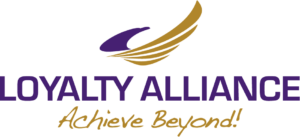Embarking on a Lean journey is a transformative endeavor that requires dedication, collaboration, and strategic focus. Throughout this eBook, we’ve explored various facets of Lean implementation, delving into key principles, challenges, and success drivers. As you navigate this path of continuous improvement, remember that Lean is not merely a set of tools or methodologies; it’s a cultural shift that involves every level of your organization.
Key Takeaways:
1. Cultural Transformation:
- Understand that Lean is not just about processes; it’s a mindset shift.
- Foster a culture of continuous improvement, transparency, and collaboration.
2. Leadership and Management:
- Secure unwavering support from top management.
- Appoint a Lean Champion to guide and drive initiatives.
- Align leadership focus with organizational goals and employee priorities.
3. Empowering Employees:
- Empower employees to actively contribute to Lean initiatives.
- Clearly define responsibilities, expectations, and recognition strategies.
4. Strategic Focus:
- Ensure Lean activities align with your strategic business plan.
- Prioritize waste reduction to positively impact the bottom line.
5. Balancing Act:
- Avoid overwhelming employees with too many changes simultaneously.
- Focus on smaller, key improvements that drive substantial results.
6. Communication and Celebration:
- Establish clear communication strategies to convey goals and expectations.
- Celebrate successes, big and small, to reinforce positive behaviors.
7. Proactive Problem Solving:
- Adopt a proactive approach to continuous improvement.
- Address day-to-day challenges before delving into major initiatives.
8. Long-Term Vision:
- Instill a long-term vision for Lean, going beyond quick fixes or short-term gains.
- Keep the momentum going by appointing a Lean Champion and celebrating achievements regularly.
9. Avoiding Setbacks:
- Be aware of and address common setbacks, including lack of management support, focus, and empowerment.
- Prioritize employee perspectives and daily challenges in addition to strategic goals.
10. People-Centric Approach:
- Remember that Lean is 80% people and 20% technology.
- Build trust through actions, not just words.
Lean Implementation Roadmap Checklist:
1. Leadership and Support:
o Secured unwavering support from top management.
o Appointed a Lean Champion for guidance.
o Aligned leadership focus with organizational goals and employee priorities.
2. Empowering Employees:
o Established empowerment mechanisms.
o Defined clear responsibilities and expectations.
o Implemented a recognition program.
3. Strategic Focus:
o Aligned Lean activities with the strategic business plan.
o Prioritized waste reduction initiatives.
4. Balancing Act:
o Avoided overwhelming employees with too many changes.
o Focused on smaller, key improvements.
5. Communication and Celebration:
o Established clear communication strategies.
o Planned regular celebrations for successes.
6. Proactive Problem Solving:
o Adopted a proactive approach to continuous improvement.
o Addressed day-to-day challenges before major initiatives.
7. Long-Term Vision:
o Instilled a long-term vision for Lean.
o Appointed a Lean Champion for maintaining momentum.
8. Avoiding Setbacks:
o Ensured management support and focus.
o Empowered employees and set clear expectations.
o Balanced the pace of change.
o Prioritized employee perspectives alongside strategic goals.
9. People-Centric Approach:
o Acknowledged that Lean is 80% people.
o Built trust through actions.
Remember, your Lean journey is unique to your organization. Adapt these principles and checklist items to suit your specific needs and context. Embrace the continuous improvement mindset, and may your Lean journey be fruitful and transformative.
- Mini Deep Dive: Change Readiness – Undefined Action Plans - February 24, 2024
- Lean Conclusion: Navigating Your Lean Journey - February 16, 2024
- Going Lean, Part 5: Keeping the Momentum Going - February 9, 2024

